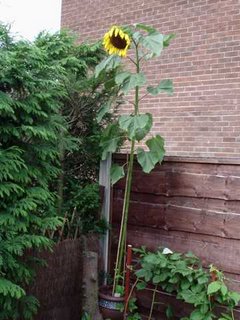Chokecherry and Saskatoon
A friend from Canada has raised my interest on two species of fruit shrubs that grow native in Canada (and North America), the Saskatoon (Amelanchier alnifolia) and Chokecherry (Prunus virginiana).
The Chokecherry is not to be confused with the Chokeberry, indeed they are a completely different family. The Chokecherry look and tastes s a lot like the Blackcurrant and indeed it may be why its not a common plant out side of the USA. The plant however is very hardy and would take to UK conditions with out much concern. Sourcing the plant is going to prove very tricky as I suspect its very rare to find in the UK. Should I then find a suppiler, getting growing advice and seeing just how well it can cope with UK conditions would be interesting.
The Saskatoon is another rare plant in the UK, the family Amelanchier is actually quite common in the UK and goes by the common name of Juneberry. The alnifolia species is however the only member of this family to go by the Saskatoon name and is the one I am most interested in. Indeed like the Chokecherry its hardy and could cope with UK conditions with out much of an issue.
Finding the plants aside I am very keenly aware that these species are native species and growing them raises some concerns. Introducing any new species can destroy native species and you have to be very aware of that. As such I am going to see if I can source some advice on these two plants, as yet I am unsure where to get advice from.
The Chokecherry is not to be confused with the Chokeberry, indeed they are a completely different family. The Chokecherry look and tastes s a lot like the Blackcurrant and indeed it may be why its not a common plant out side of the USA. The plant however is very hardy and would take to UK conditions with out much concern. Sourcing the plant is going to prove very tricky as I suspect its very rare to find in the UK. Should I then find a suppiler, getting growing advice and seeing just how well it can cope with UK conditions would be interesting.
The Saskatoon is another rare plant in the UK, the family Amelanchier is actually quite common in the UK and goes by the common name of Juneberry. The alnifolia species is however the only member of this family to go by the Saskatoon name and is the one I am most interested in. Indeed like the Chokecherry its hardy and could cope with UK conditions with out much of an issue.
Finding the plants aside I am very keenly aware that these species are native species and growing them raises some concerns. Introducing any new species can destroy native species and you have to be very aware of that. As such I am going to see if I can source some advice on these two plants, as yet I am unsure where to get advice from.

